Common names: wild garlic, ramson, buckram, broad-leaved garlic, wood garlic, bear leek, bear’s garlic
Scientific name: Allium ursinum
Family: Liliaceae
Origin: native
Flowering season: April to June
Habitat: woodland, hedgerows
A delicious sign of the old, wild garlic is also known as ramsons. Look for them in shady woods where they coat the woodland floor in spring.
Common names: wild garlic, ramson, buckram, broad-leaved garlic, wood garlic, bear leek, bear’s garlic
Scientific name: Allium ursinum
Family: Liliaceae
Origin: native
Flowering season: April to June
Habitat: woodland, hedgerows
Wild garlic is a medium-sized bulbous perennial with a distinctive and pungent garlicky smell that pervades woodland in spring.
Leaves: long, pointed and oval in shape with untoothed edges. They grow from the plant base and the bulb and have a strong garlic scent.
Flowers: small, white, with six petals on a thin stalk. Around 25 flowers form each rounded flower cluster which is held high on a single, leafless stalk.
Fruit/seeds: wild garlic reproduces through bulbs, bulbils and very occasionally seeds. The seeds are 2–3mm long, flattish on one side and black and are dispersed when the parts of the plant above ground die down.
Not to be confused with: lily-of-the-valley when not in flower, though the leaves of wild garlic grow from the plant base whereas lily-of-the-valley has two or three leaves on its stem. When in flower, lily-of-the-valley is easily distinguishable from wild garlic as it has bell-shaped, white flowers. Lily-of-the-valley is poisonous so be sure to fully identify wild garlic before foraging.
Wild garlic is said to repel cats. Perhaps they don’t like the smell!
Wild garlic is common and widespread across the UK. It favours deciduous woodland and chalky soils. You can also spot it in scrub and hedgerows but it prefers damp areas.
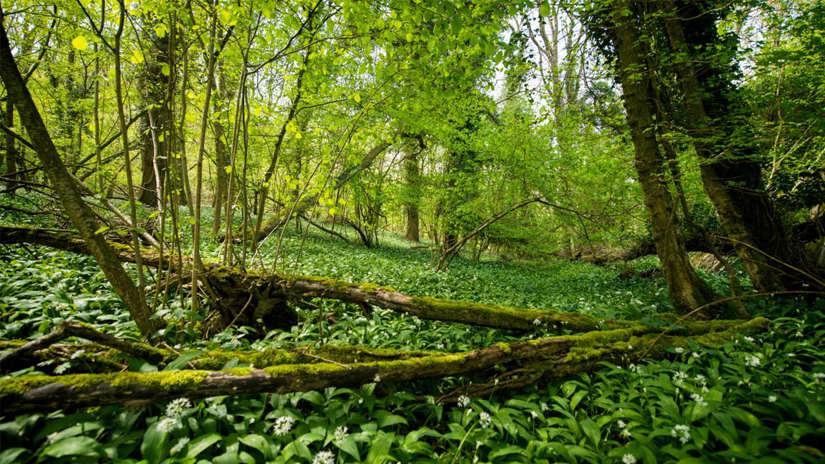
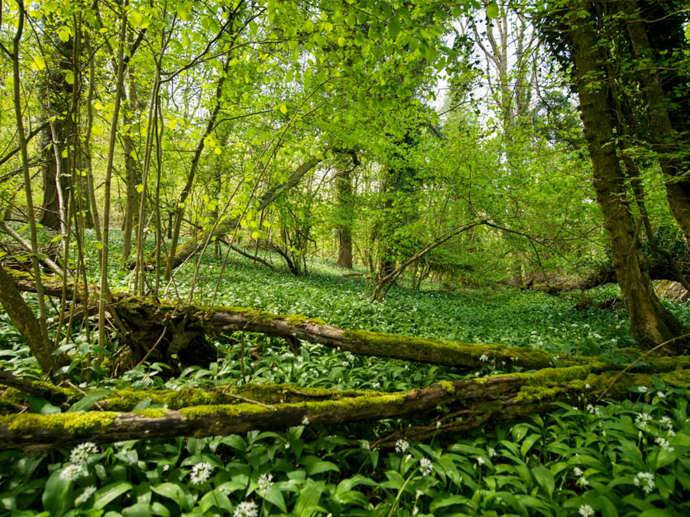
Wild garlic is an ancient-woodland-indicator plant. If you spot it while you're out exploring, it could be a sign you're standing in a rare and special habitat.
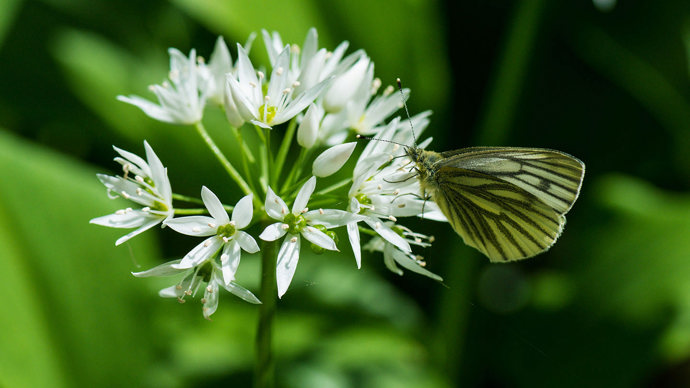
Credit: Andrew Greaves / Alamy Stock Photo
Wild garlic flowers early in spring, so is an important early bloom for the bees and other insects which pollinate them. The bulbs are also a source of food for wild boars.
Wild garlic is one of a number of plant species whose presence indicates that a wood is ancient. It has traditionally been used in medicine, the bulb being one of the key ingredients in tonics for rheumatic problems and high cholesterol.
It is also a popular foraged ingredient. Its leaves can be eaten raw in salads, or blanched and used in place of spinach, or made into a delicious soup and pesto. They have a mild garlic flavour and are at their best before the flowers appear. The flowers are also edible and can be added raw to salads.
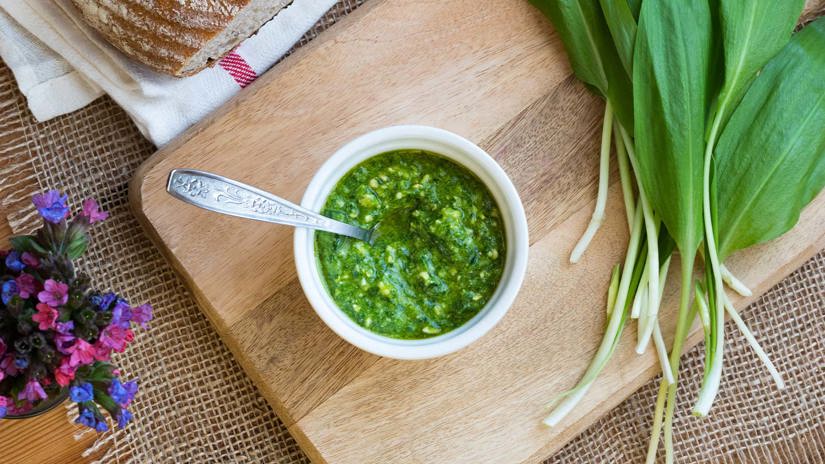
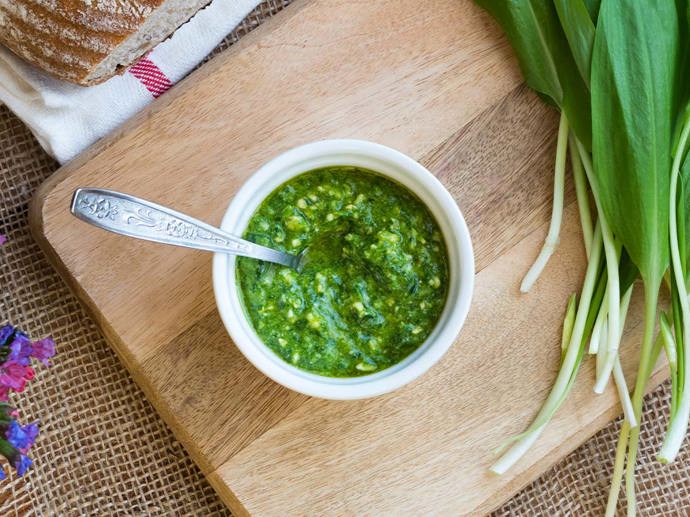
Laura Cottam • 26 Apr 2019
What's that smell? It's wild garlic season! Find out how to make the best of it with our foraging guide and recipes.
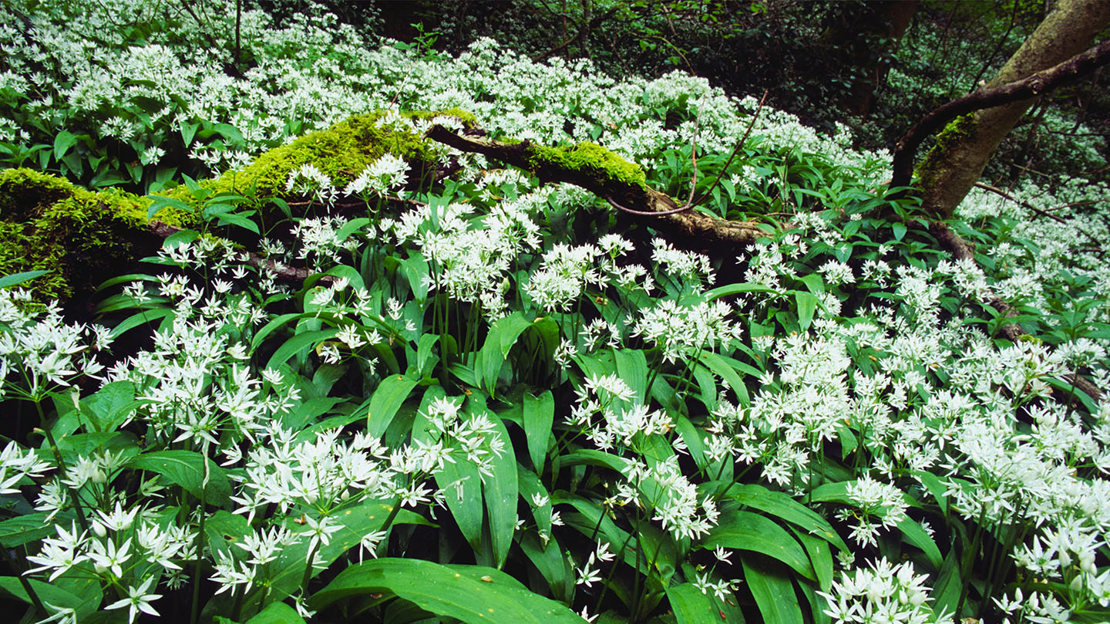
The second half of the Latin name, ursinum, refers to the fact that brown bears loved to eat the bulb. This also gave rise to two of its common names – bear’s leek and bear garlic.